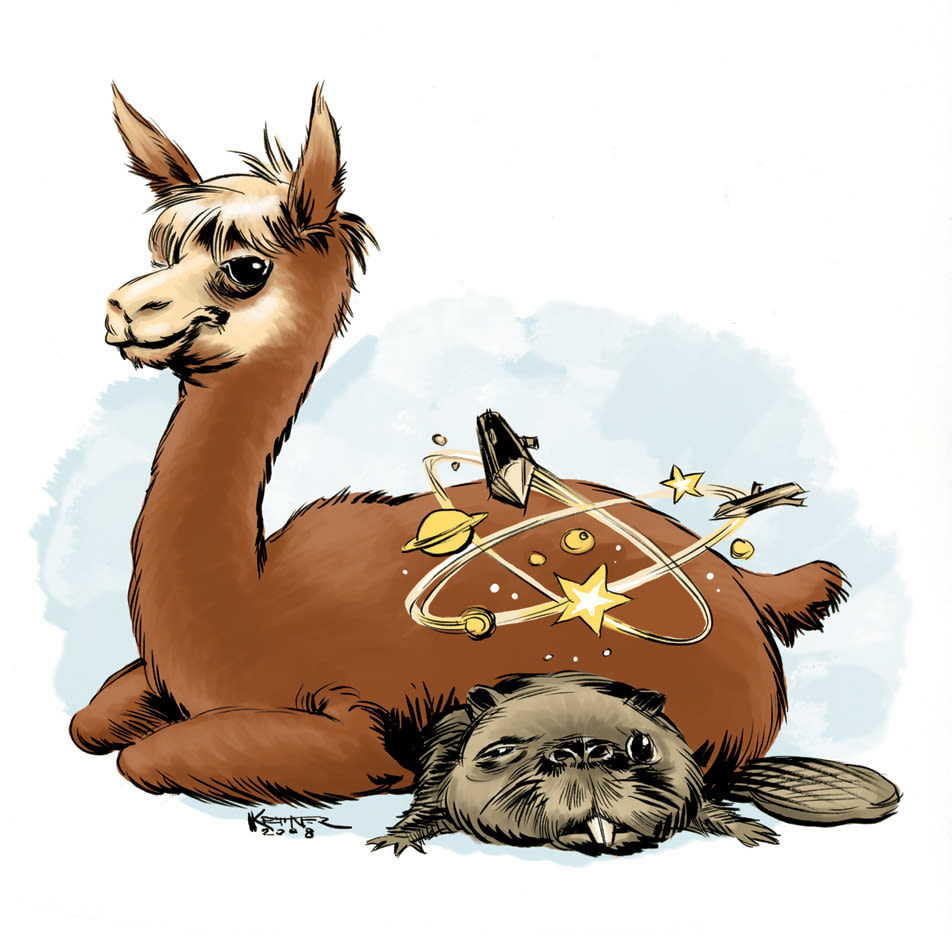Animal Instincts

Image: Lukas Ketner
SINCE 1969, the beaver has reigned as Oregon’s state animal. And it’s been a good run for 40 years: The bucktoothed little mammal has had a baseball team and an entire suburb named after it. But as we near our state’s 150th birthday, we want a change. Specifically: Out with the beaver, in with the alpaca.
Yes, the alpaca. Consider that Oregon has more alpacas than almost any other state (only Ohio and Washington best our 12,000). But more to the point, the beaver is a woefully outdated symbol of what Oregon should represent. No one wears beaver-fur coats anymore—hell, you can’t even sell a beaver hat in Portland without protesters clamoring outside your door. Clothing made from alpaca fleece, on the other hand, is considered cruelty-free. All that’s required is a once-yearly shearing, after which the happy alpacas return to their pastures.
But far from being merely a feel-good fiber, alpaca fleece is extremely valuable—in part because it’s wind- and water-resistant and dander-free (so it doesn’t itch like sheep wool can). High-quality fleece sells for anywhere between $15 and $30 per pound (compared to regular wool, which sells for $8). That means that, unlike beavers, alpacas could be good for the economy. In fact, John Merrell of Gateway Alpacas, near Salem, estimates that if the country’s alpaca herd continues to grow at its current rate, by 2023 alpaca farming could become a $20 million to $50 million industry nationwide. And that’s to say nothing of the money that could be made by breeding livestock.
Moreover, alpacas fit our state’s reputation for being green. They don’t have hooves, but rather two padded toes, which means they don’t trample pastures into mud pits. Plus, unlike other grazing animals, they don’t chew grass down to the roots. (Beavers, on the other hand, hardly qualify as environmental stewards, what with their troublesome dams in places like the Wilson River.)
But perhaps the most persuasive argument for inaugurating the alpaca is the fact that they’re as sweet as they look. If you don’t believe us, visit a local ranch—like Mike Safley’s Northwest Alpacas—on National Alpaca Farm Day, September 29. “When my kids were only 4 years old, I let them go out in the pasture with them,” says Safley. “Alpacas will come up and sniff the kids, but that’s it.”
Lucrative, green, and cute: We rest our case. Besides, alpacas are far better than the mascot that’s been dreamed up by the committee in charge of our state’s sesquicentennial: Seski the Sasquatch, a microbrew-swilling yeti who speaks in broken English. Uh-huh.



